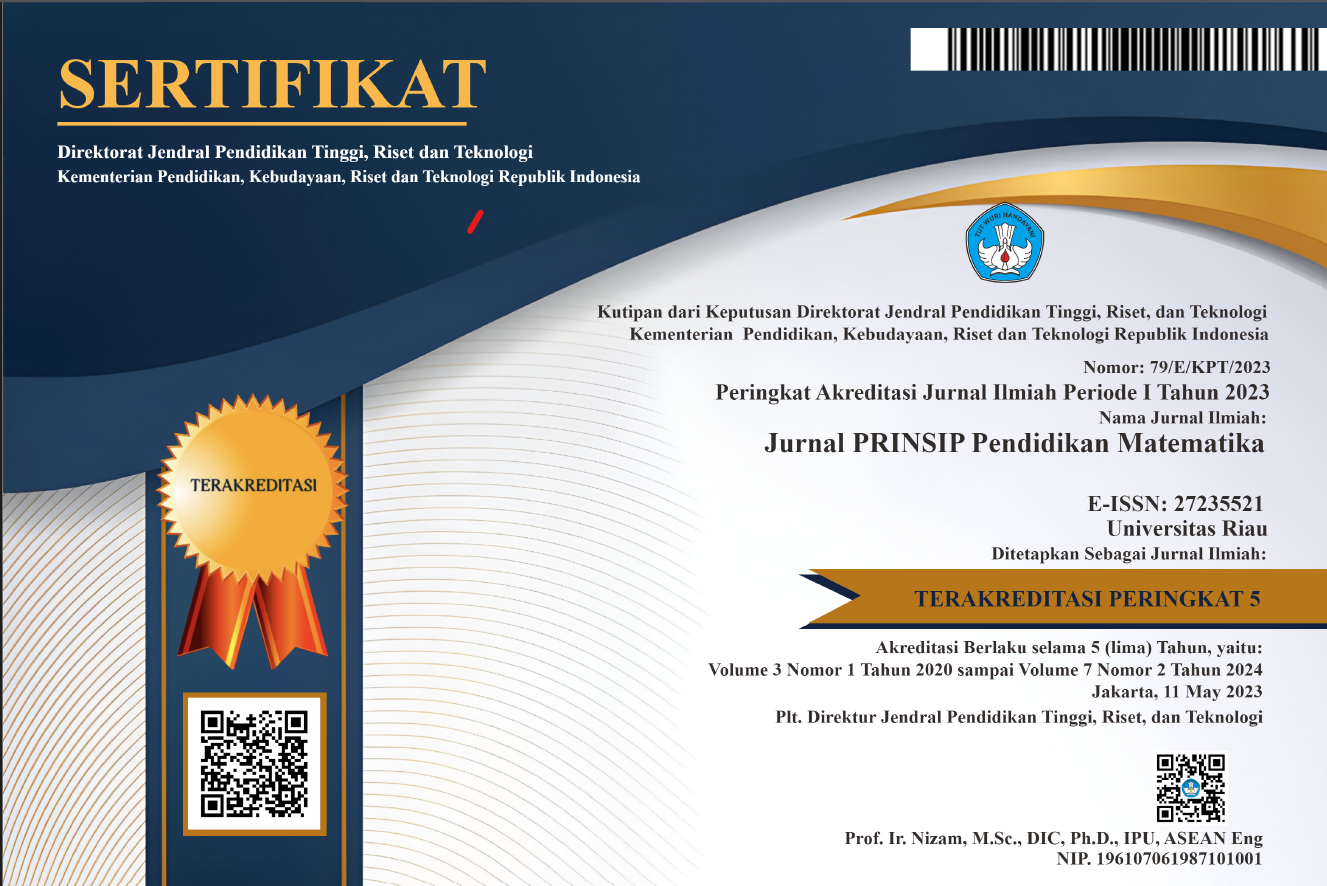PENGEMBANGAN PERANGKAT PEMBELAJARAN DENGAN MODEL EXPERIENTAL LEARNING PADA MATERI KUBUS DAN BALOK UNTUK SISWA KELAS VIII SMP
Abstract
The background of this research is the limited of learning device as a means of supporting learning referring to 2013 curriculum. This research aims to develop syllabus, Learning Implementation Plan (LIP) and Student Learning Worksheet (SLW) with experiential learning model on the subject of cubes and beams for 8th grade students of junior high school. The research used Research and Develomant (R&D) with the ADDIE procedure; analyze, design, development, implementation, and evaluation. Due to time constraints, this research is only done until the development stage. This research instrument used are sheet of learning device validation, questionnaire response of learnears, and evaluation of learning outcomes. Syllabus, LIP and SLW validated two times by three validators and revised according to the suggestion from the validator. The valid LIP was then limited tested with the subject of nine students of 8th grade in SMP Muhammadiyah 1 Pekanbaru. Based on the analysis result of the validation data, it can be concluded that syllabus and LIP are considered very valid and SLW is valid with average rating for syllabus is 3.44, LIP is 3.34 and SLW is 3.13. In the second validation, it can be concluded that the syllabus, LIP and SLW are considered very valid with the average rating for the syllabus is 3.75, for the LIP is 3.65 and for SLW is 3.47. Based on the analysis results of the questionnaire response of learners to SLW in the limited trial is 95.5% with very practical category and the average of the result of student’s evaluation is 84.8. Based on the results of data analysis and discussion concluded that the syllabus, LIP, and SLW with experiential learning model on the subject of cubes and beams for 8th grade students of Junior High School have fulfilled the validity and practical requirements to used by 8th grade students of Junior High School.
Downloads
References
Dyahsih, A.S. dan Ali, M. (2015). Keefektifan Experiential Learning Pembelajaran Matematika MTs Materi Bangun Ruang Sisi Datar. Jurnal Riset Pendidikan Matematika, 2(2), 175-185.
Kemendikbud. (2014). Salinan Lampiran Permendikbud Nomor 103 tentang Pembelajaran pada Pendidikan Dasar dan Menengah. Jakarta: Kemendikbud.
Kemendikbud. (2016). Salinan Lampiran Permendikbud Nomor 22 tentang Standar Proses Pendidikan Dasar dan Menengah. Jakarta: Kemendikbud.
Maat, S.M., Suanto, E., dan Zakaria, E. (2017). Penerapan Pembelajaran Pengalaman dalam Pendidikan Matematika: Sebuah Kajian Awal. Seminar Pendidikan Serantau ke VIII 2017 di UKM Malaysia, 1, 210–217.
Munif, I.R.S., dan Mosik. (2009). Penerapan Model Experiential Learning pada Pembelajaran IPA untuk Meningkatkan Hasil Belajar Sekolah Dasar. Jurnal Pendidikan Fisika Indonesia, 5,79-82.
Nugroho, N.B. (2015). Pengembangan RPP dan LKS Berbasis Problem Based Learning pada Materi Himpunan untuk Siswa SMP Kelas VII. E-Journal Universitas Negeri Yogyakarta, 1(1), 96–118.
Prasetyo, I. (2011). Telaah Teoretis Model Experiental Learning dalam Pelatihan Kewirausahaan Program Pendidikan Non Formal. Majalah Ilmiah Pembelajaran, 2(7), 103–119.
Sugiyono. (2012). Metode Penelitian Kuantitatif, Kualitatif, dan R&D. Bandung: Alfabeta.
Suwangsih, E. (2006). Aliran Psikologi Kognitif. Bandung: Universitas Pendidikan Indonesia.
Wardhani, S., dan Herawati, R. (2009). Teknik Pengembangan Silabus dan RPP Matematika SMP. Sleman: PPPPTK Matematika.





